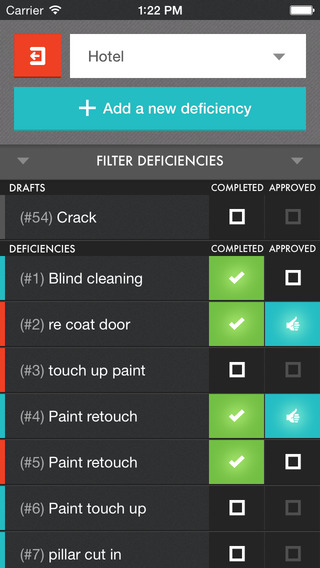Bridgit: From Startup to ‘Closeout’
by: Karl Sorensen
Mobile applications are life’s little luxuries that I use to escape the daily routines. Like so many of us today, whether I’m on the bus for my morning commute or just waiting in line for lunch, I’m often blissfully engaged in a virtual world that slingshots birds into wooden structures until I must reluctantly return to reality. Best of all, this simple joy is never far from my fingertips. To me, mobile apps are getaway vehicles that always have the engine running.
Conversely, consumers seek mobile apps that help them engage better with the marketplace and the world around them. It is this demographic that Ontario-based startup Bridgit aims to win over. Founded in December 2012, Bridgit has been using multi-platform technology to connect multiple segments of the construction industry with up-to-the-moment tech innovation.
Co-Founder Mallorie Brodie | Photo: Nick Kozak
“We work with project teams to ensure the best solutions to real industry problems,” says Laura Brodie, Bridgit’s communications director. Regardless of problem size, the firm believes it has the technology to eliminate any and all obstacles. This drive to innovate and to overcome historic challenges is shared across every level of the organization, starting at the top with founders Mallorie Brodie and Lauren Hasegawa.
Both share significant experience working with startups and the AEC industry, providing the necessary tools to perpetuate a vision that permeates all of Bridgit. Most recently, their vision has led to the creation of a mobile app, “Closeout”, which allows project managers to close out project sites efficiently, without the hassle of handwritten notes, time-intensive data entry and the inevitable missing photographs.
How does Closeout work?



Closeout takes everything that is painful about tracking punchlist items and converts the process into an organized and cloud-based application that is integrated across several platforms. Explains Brodie, “Closeout is easy and it takes about five minutes to learn. Using the app, users can create and assign punchlist items by way of entering descriptions, taking photos, managing tags, assigning contractors and establishing due dates.”
After capturing the deficient item from their mobile device, general contractors can then email open punchlist items directly to contractors for correction. Meanwhile, the back-end master punchlist logs are updated in real time. They can then filter and print lists as needed without incurring the costly waste or confusion from managing constantly changing spreadsheets. So, for as little as $13/month per user, the final sprint to BOD is no longer a daunting task.
Integrated industry involvement
Bridgit’s focus on construction technology integration fosters an environment where technology vendors and GCs regularly interact. The startup also is involved within the greater AEC community to pilot new programs. For example, one of Bridgit’s recent undertakings has been developing new beta test programs for Google’s Glass and Thalmic Labs’s Myo products. So, it is not uncommon now to see Bridgit personnel and partners walking through job sites wearing simple, high-tech accessories controlled simply by basic hand gestures.
Aside from commerce, “Bridgit exists to educate and foster an environment of learning within the AEC community,” adds Laura Brodie, noting that company thought leaders can often be found speaking at industry events, company seminars and academic symposiums throughout North America.
It is this desire to innovate and educate that sets Bridgit apart, she says. The mission? Creating a refreshing, disruptive alternative to longheld practices within the built environment.
You would be a good candidate for ‘Closeout’ if…
- Your company is involved with punchlist management;
- Your current punchlist processes are cumbersome, confusing and/or too costly;
- Reducing waste and maximizing labor efficiency is crucial to your bottom line.


Discussion
Be the first to leave a comment.
You must be a member of the BuiltWorlds community to join the discussion.